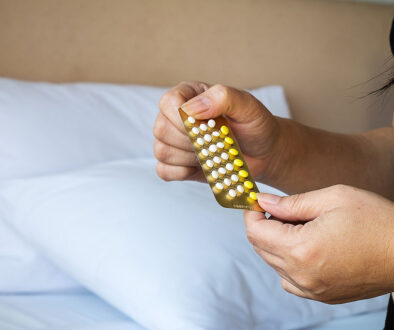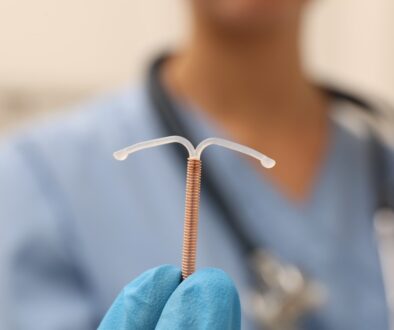When Should You Have IUD Removal? How to Plan and Prepare
An Intrauterine Device (IUD) is becoming one of the most popular forms of birth control due to its ease and convenience. An IUD can provide effective birth control for three to ten years, depending on the type of IUD you have. But how much do you know about IUD removal? And when should you have it removed?
We’ll examine some of your most frequently asked questions about IUD removal, including how to prepare and when it should be removed.
When Should You Have Your IUD Removed?
There is no one blanket answer to this question. You’ll find that when your IUD should be removed depends upon several factors. We’ll work closely with you to determine when the time is right.
However, the following are some general guidelines:
Have the IUD Removed When It Expires
Copper IUDs last for 10 years, while hormonal IUDs can be effective for 3 to 8 years, depending on the brand. Check the specific expiration date of your IUD and plan for its removal before it reaches the end of its effectiveness.
Remove the IUD if There Are Health Concerns
Though they are not common, some women do have complications from IUDs, such as bleeding or pain. If you are experiencing these symptoms, we want you to schedule an appointment with us as soon as possible. We may need to perform an IUD removal before the device expires.
Remove It If Changing Birth Control Methods
If you no longer wish to use the IUD for contraception or are considering switching to a different birth control method, you can schedule a removal appointment. We’ll be glad to discuss your other birth control options to find the best type of contraception for you.
An IUD Should Be Removed When You’re Ready to Have a Baby
Unlike other forms of birth control, IUDs don’t have a delay in returning fertility after removal, so you can try to conceive immediately.
An IUD Should Be Removed if You’re in Menopause
If you have reached menopause, it may be time to consider removing your IUD. Although it is not necessary to remove your IUD immediately, you no longer need the contraceptive benefit of an IUD once you are in menopause.
Do NOT Attempt to Remove an IUD Yourself
You should never attempt to remove an IUD by yourself. Specialized equipment and training is needed to ensure a safe and successful procedure. Attempting to remove an IUD on your own can lead to serious complications, including infections, injuries, or even the possibility of leaving parts of the IUD inside the uterus.
We will be happy to remove your IUD. Just contact us for an appointment.
How to Plan and Prepare for Your IUD Removal
The key to making the entire process as smooth and comfortable as possible is being prepared. We suggest that you prepare by doing the following:
Speak to us
If you’re nervous about the procedure, we want to know. We can work with you to help alleviate your anxiety.
Schedule your IUD removal appropriately
Your cervix tends to be softer when you’re not having your period. Therefore, aim to schedule removal when you’re not menstruating.
Take deep breaths
During the removal, take slow, deep breaths to help relax your body.
Take over-the-counter pain relievers
You can take an over-the-counter pain reliever about an hour before the removal.
What are the Side Effects of IUD Removal?
The good news is that most people experience minimal side effects, and the process is relatively straightforward. However, it is possible to experience some of the following:
- Mild cramping (similar to menstrual cramps)
- Spotting or bleeding
- Dizziness or lightheadedness
Does Your Body Change After IUD Removal? What to Expect Right After IUD Removal
You will likely experience some changes after your IUD is removed. These changes may include
- Immediate Relief
- If you’ve been experiencing any side effects from the IUD, they should start to fade.
- Return to Fertility
- One of the reasons that IUDs are so popular is that their effects wear off quickly after removal.
- Changes in the Menstrual Cycle
- It may take a few months for your period to return to its regular schedule.
- Monitoring Your Body
- After the removal, keep track of your menstrual cycle. It might take a few months for your periods to regulate back to their natural pattern.
How Painful is an IUD Removal?
While pain is perceived differently by different people, most report having only mild to moderate discomfort, comparable to the cramps you have when you’re having your period. Our goal is to minimize your discomfort during the procedure.
If you are nervous, anxious, or concerned about pain, please speak with us. We want this experience to be as comfortable as possible.
Ready to Have Your IUD Removed? Our Leading Gynecologists in Raleigh Are Ready to Help You
IUDs are 99 percent effective at preventing pregnancy. Because they are low maintenance—and because fertility can quickly return if you want to have a baby—they are one of the most popular choices of our patients.
When it’s time for an IUD to be removed, we’ll provide the care, time, and attention you need to ensure a safe removal with as little discomfort as possible.
Has your IUD expired? Want to learn more about the benefits of an IUD? Just contact us to schedule an appointment.





